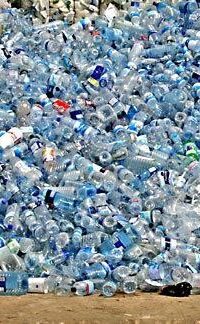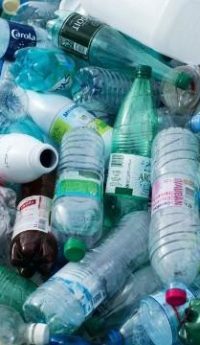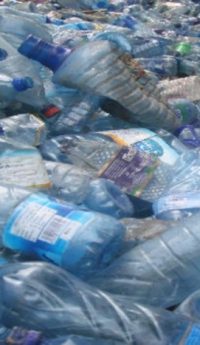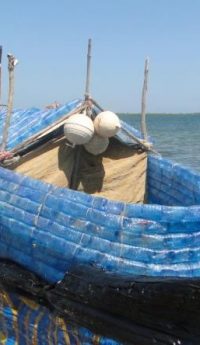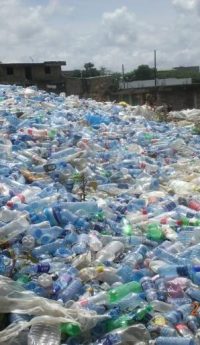PROPOSAL ON PLASTIC BOTTLES COLLECTION AND RECYCLING PROGRAMME, FOR SUSTAINABLE URBAN DEVELOPMENT.
Introduction
In general, plastics are high molecular weight organic polymers that can be molded into desired shape by the application of heat and pressure. Plastic bottles used for storing water and beverages are mostly made from polyethylene terephthalate (PET) polymer material. PET is a preferred material due to its ability to store carbonated beverages such as soda without compromising the quality of the beverage over time. PET bottles are easy to manufacture, easy to transport and cheaper compared to glass bottles.
The increased use and production of plastic bottles in Kenya and sub-Saharan Africa is a growing concern. This is because the sophistication of waste management systems is not evolving at an appropriate rate to deal with the increasing levels of plastic waste. In general, plastic is a very useful material with a myriad of applications due to its unique physical and chemical properties. Regrettably, the properties of plastic that make it so treasured also make its disposal challenging, such as its durability, light weight and low cost. In many cases plastics are thrown away after one use, especially packaging and sheeting, but because they are durable, they persist in the environment. Without appropriate solid waste management system, there will be increased plastic waste, which will add to the ‘back log’ of plastic waste which is already in existence. There is no agreed figure on the time that plastic takes to degrade, but it could be hundreds or thousands of years (Kershaw et al.,
2011).
Used plastic bottles may have several impacts on the health of humans and ecosystems. However, the full extent of these impacts is largely depended on waste management practices, culture, policy, guidelines and regulations in cities and countries at large. For example, some people especially in cities may resort to burning their plastic bottles alongside other wastes. This practice results to emission of toxic fumes that in turn negatively impact on the air quality. Visually, plastic waste is a problem to human and aquatic habitats, but it also has substantial impacts on wildlife habitat. The blocking of drainage channels by inappropriately disposed plastic bottles alongside other plastics impacts negatively on the economy especially when local authorities are forced to allocate funds for cleanup exercises. Furthermore, blockage of sewerage lines and drainage systems which in turn creates foul smells and provides a favorable habitats for mosquitoes and other vectors that could spread various diseases.
Current approaches for controlling the impact of plastic bottles
A number of approaches can be undertaken in order to ensure reduced impact of plastic bottles. We review some of these approaches below.
a) Creation of awareness – This has been done through using appropriate labels on the bottles. The labels aim at informing the consumer that they have a responsibility to ensure proper disposal of the bottles after use. However, it is not clear if these labels have made any substantial difference. There is also the question of where does the consumer dispose the bottle as required? Whereas the consumer and manufacturer might have good intentions, proper infrastructure (e.g. waste bins in parks, estates and streets) might be inadequate or nonexistent.
b) Using glass bottles as an alternative – phasing out plastic bottles and replacing them with glass bottles may be the ultimate solution. However, this will not suddenly remove the existing bottles already in the environment.
c) Recycling – scaling up of recycling of plastic bottles will eventually fill in the gaps that exist in (a) and (b) as discussed above. Continued awareness through labeling and in the mass media might foster responsible disposal of plastic bottles but what do we do we the collected bottles? If they end up in municipal landfills then it beats reason since their effects such as destructions of aesthetics will continue to be felt. On the other hand, there are still many bottles in the environment that even if we deployed (b)- glass bottles to the maximum then what happens to the plastics already in the environment? Recycling seems to be the alternative approach that helps close the loop. That is it is the missing link but not in entirety.
The proposal
The proposed approach to remove waste bottles in the environment largely borrows from methods that are currently being used albeit with a few tweaks. The approach will be anchored on the three methods (a) (b) and (c) discussed above. The idea is to have a closed loop management system such that there is continuous removal of what is already in existence, recycling it and creating awareness so that people become conscious of a clean and healthy environment. The proposal is categorized into phases as follows.
Phase A – Malls within Nairobi
We propose to have a pilot program where consumers voluntarily return their used plastic bottles to the manufacturer. This will be achieved by designating collection points at key malls in Nairobi. The collection bins and or containers will be branded with company colors and educative messages on the importance of returning the used bottles and recycling. There will also be banners and possibly flyers with simple awareness messages. During the first 2 weeks of the campaign, each collection point will be manned by at least two attendants. Their role will be to hand out flyers and collect a data from consumers. The data will be useful for improving the campaign.
Phase B – Animal and recreational parks
Under this phase, we propose to have larger waste collection bins at key Animal Parks and Orphanages as well as designated recreational sites like Uhuru Park, Lurnar park, Central park, Jivanjee Gardens, Abouretum, Karura Forest along Limuru road, Uhuru Gardens, the People Park in Machakos and any other garden or park that provides and serves as recreational facility to the populace. The strength of having the collection bins at animal
parks and all other recreational facilities is that they are organized sites and institutions ie. KWS, KFS and there is some form of discipline to people visiting these places. Advisory notices and banners may be placed at strategic places within the park to help direct the consumers on the location of the collection bins and the purpose of the campaign. A team may be deployed to a sample of these parks to gather some data.
Phase C – Scaling up and improvement of phase A and B
Phase A and B could run for 2-3 months as lessons are learned and planning is made for scaling up and improvement. Data collected from the pilot program through questionnaires and observation will be vital for this phase. It is also advisable to review the program on a monthly basis so as to ensure its success. Other key components of phase C will be as follows.
a) Gradually launching the program in other Towns, Cities and Counties all around the
Country.
b) Bringing on board more policy makers, community based organizations, women and youth groups among others.
c) Giving incentives in form of cash, airtime, free sodas (for example 50 plastic bottles for a free soda or airtime), collection bins and bags to community waste
management groups etc.
Transportation, Storage and Recycling
An appropriate site for storage of the collected bottles must be found before the program begins. This site will have to be licensed by the national environment management authority (NEMA) as a waste holding site. The vehicles transporting the returned bottles will also require a NEMA license. However, the service can be outsourced to a licensed waste handler. Due to the bulky nature of the bottles, they will have to be cut into smaller pieces and converted into pellets before being molded into other products. Once the bottles are recycled and made into products that can be sold at a profit, the monies obtained should be used to sustain the program.
Foreseen challenges
1. Due to the lack of or inadequate collection bins at strategic and convenient places the general culture of the people in the city may dump other wastes into the bins/containers that are meant for collection of used plastic bottles.
2. Currently it is the street boys and others collect these bottles and sell them to recyclers (e.g. in Kariobangi). Thus they might steal from the unmanned collection bins thereby jeopardizing the efforts put in place by the TEAMEnvironment KENYA in Partnership with Coca-Cola initiative. Security at the storage center will also have to be enhanced. However, the street boys and others already in the business might be a plus to the program once incentives kick in.

